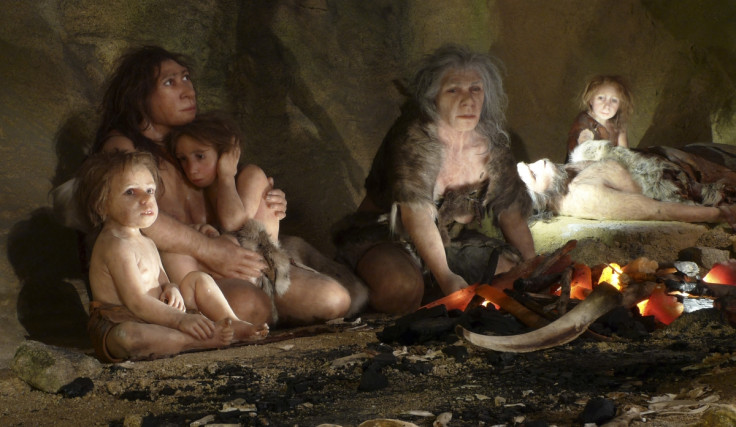France: Pech-de-l'Azé I Neanderthals built fires using combustion chemistry

Neanderthals living in France 50,000 years ago appear to have been using chemistry to build fires. Scientists believe remains found at the Pech-de-l'Azé I could indicate the Neanderthals there were using manganese dioxide to make fire, rather than relying on lightning or forest fires to spark the flame.
The use of fire among Neanderthals has been hotly debated. Evidence at at least two sites shows they had built fires by some means, but that this was not necessarily a regular occurrence. Whether they relied on external influences or created fire themselves is also not known.
Some experts have suggested their inability to master the use of fire could have played a big part in their extinction, while others say there is evidence to show Neanderthals controlled fire as long ago as 400,000 years.
Led by researchers at the Leiden University, a team has now re-examined Neanderthal artefacts to make a case that they were not only able to build fires, but they did so using chemistry. The researchers believe the high number of manganese dioxide blocks found at the site were used to lower the combustion temperatures required to ignite a fire.
Lower combustion temperatures
Previously, these blocks were thought to have been used as a black pigment to decorate their bodies. However, the researchers, writing in the journal Scientific Reports, say this does not make sense as. If they had fires, it would have been far easier for them to use soot and charcoal from that for body decorations. Instead, they say the blocks were used as firelights, with Neanderthals grinding them into a powder and sprinkling them over wood turnings.
Combustion experiments carried out showed wood turnings would not even ignite at 350C, mixtures of wood turnings with manganese dioxide would combust from around 250C. "We propose that the mechanism in facilitating combustion involves the low temperature decomposition of manganese dioxide, stimulated by the reactive gases derived from wood pyrolysis and the consequent release of oxygen that both reduces the critical temperature for ignition and increases the rate of char combustion," they wrote.
Adding to their argument, they team said other manganese oxides were available in the environment, yet they were not chosen. If they were being used as body paint, they would have been utilised. If they were being used for fire, they would not (manganese dioxide is the only one that can be used to start fires).
Fire on demand
They say the body paint theory could still hold true, but the team believes manganese oxide may well have played a bigger part in Neanderthal society than what was previously thought. Concluding, they say Neanderthals would have had plenty of time to interact with fire and come to understand the value of manganese dioxide in fire making.
"From the combustion and TGA experiments, it is clear that manganese dioxide is an effective facilitator in fire making, reducing the auto-ignition temperature of wood and substantially increasing the rate of combustion," they wrote. "We hypothesise that fire-making was manganese dioxide's most beneficial distinguishing attribute available to Neanderthals.
"Although we should not exclude the possibility that manganese dioxide was used for decoration and social communication, the combustion, compositional and archaeological strands of evidence lead us to the conclusion that late Neanderthals at Pech-de-l'Azé I were using manganese dioxide in fire-making and by implication were producing fire on demand."
© Copyright IBTimes 2025. All rights reserved.






















